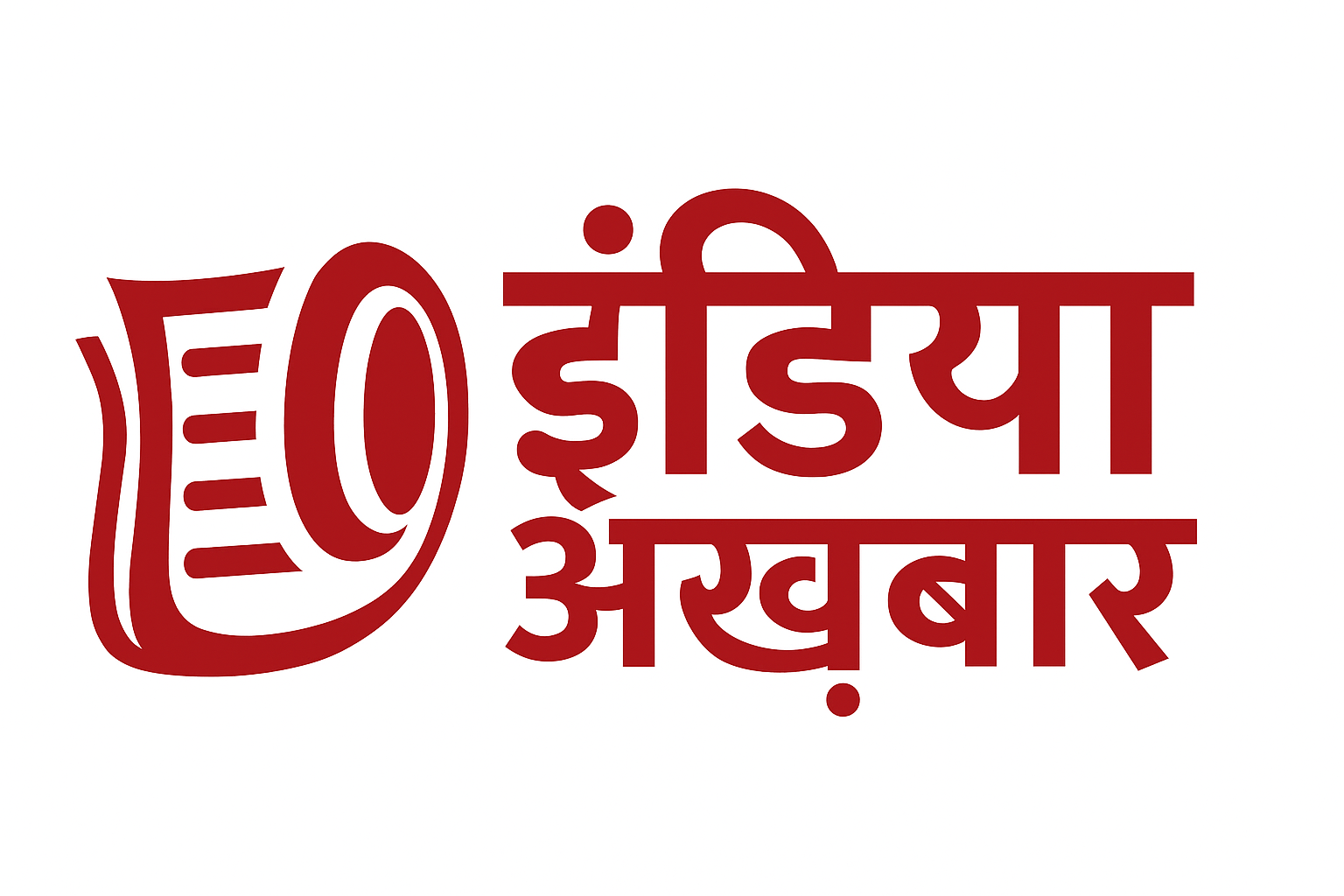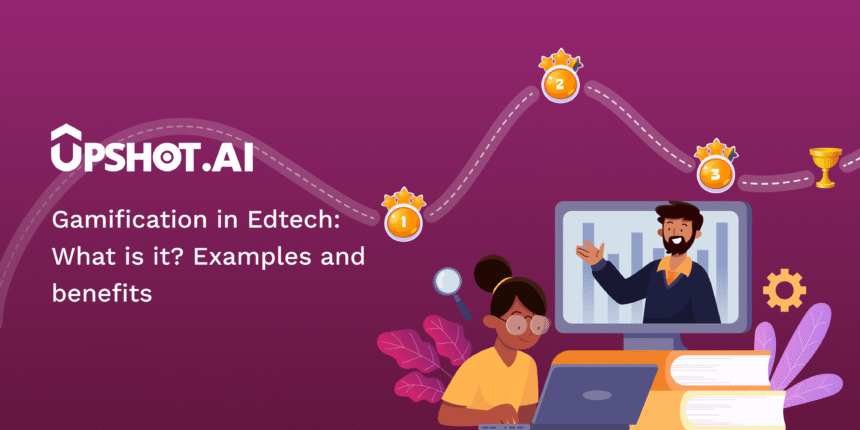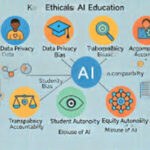Gamification in Learningआज की digital दुनिया में पढ़ाई सिर्फ किताबें और लेक्चर तक सीमित नहीं रही। EdTech startups ने learning को interactive, मज़ेदार और habit-forming बनाने के लिए **gamification** का ज़बरदस्त इस्तेमाल किया है। Gamification मतलब – पढ़ाई में game elements (points, badges, leaderboards, streaks, levels, challenges) जोड़कर engagement और retention बढ़ाना।
India में कई startups ने इन techniques को creative तरीके से implement किया और measurable results दिखाए — higher completion rates, better test scores और अधिक user retention। इस ब्लॉग में हम deep dive करेंगे: gamification क्या है, क्यों effective है, कौन से Indian startups इसे अच्छा कर रहे हैं, उनके case studies, best practices और pitfalls जो दूसरों को avoid करने चाहिए।
Gamification — सादा शब्दों में क्या है?
Gamification fundamentally learning में **game psychology** apply करना है। मतलब:
- Short-term rewards (badges, points) से motivation मिलती है।
- Progress bars और levels से users को visible growth दिखती है।
- Leaderboards और challenges से healthy competition बनता है।
- Quests और storylines से content engaging बनता है।
Psychology में इसे behaviour reinforcement और operant conditioning से जोड़ कर देखा जाता है — छोटी-छोटी rewards से activity repeat होती है और habit बनती है।

क्यों Gamification Effective है? (Science behind it)
Gamification in Learning काम करती है क्योंकि यह human brain के कुछ basic triggers को target करती है:
- Instant gratification: छोटे rewards dopamine release करते हैं — जिससे user motivated रहता है।
- Clear goals + feedback: जब आगे क्या करना है clear होता है और immediate feedback मिलता है, learning तेज़ होती है।
- Social proof: Leaderboards और social sharing से users और effort देते हैं।
- Autonomy: Choice-based challenges users को control का feeling देते हैं — engagement बढ़ता है।
Education में, ये अर्थ रखता है कि boring rote learning की जगह students active participation करते हैं और long-term retention बेहतर होती है।
Indian EdTech Startups Doing Gamification Right — Quick List
नीचे कुछ Indian startups हैं जिन्होंने gamification thoughtfully integrate किया है (case studies के लिए आगे और detail है):
- BYJU’S / BYJU’S Exam Prep (formerly Gradeup)
- Vedantu
- Toppr
- Testbook
- Unacademy
- Doubtnut (select modules)
- Teachmint (for tutors integrating gamified curricula)
Case Study 1 — BYJU’S Exam Prep (Formerly Gradeup): Daily Quizzes & Streaks
Background: Exam-focused users (SSC, Banking, JEE, NEET, Govt exams) को नियमीत practice और revision की ज़रूरत होती है। BYJU’S Exam Prep ने यह देखा और daily quiz formats, streaks और timed challenges को central बनाया।
What they implemented:
- Daily quizzes with leaderboards — contestants podium पर आते हैं और top scorers को visibility मिलती है।
- Streak mechanics — लगातार कई दिन quiz करने पर bonus points और badges मिलता है।
- Topic mastery badges — concept-wise completion दिखाने के लिए micro-badges।
- Community contests and weekend tournaments — social validation बढ़ाने के लिए。
Impact: Daily active users (DAU) और weekly retention पर positive असर पड़ा। Short, focused quizzes ने users को consistent practice की आदत दी।
Case Study 2 — Vedantu: Live Classes + Interactive Gamified Tasks
Background: Vedantu की USP live interactive classes हैं। लेकिन सिर्फ live lecture डालने से engagement maintain नहीं रहती — इसलिए उन्होंने gamification layer add किया।
What they implemented:
- Live polls and in-class quizzes during sessions — instant feedback loop।
- XP points for participation — students class में पूछे गए सवालों, polls और assignments पर XP पाते हैं।
- Badges for consistent attendance and concept mastery — parents और students दोनों को visible progress दिखता है।
- Classroom leaderboards — healthy competition within batch।
Impact: Student engagement बढ़ी, teachers को भी real-time attention metrics मिले और drop-off कम हुआ। Especially younger learners में attention और retention में measurable improvement देखा गया।
Case Study 3 — Toppr: Adaptive Learning + Gamified Pathways
Background: Toppr early on personalized adaptive learning पर focus करता आया है। Gamification ने उसको और भी effective बनाया।
What they implemented:
- Adaptive pathways — student performance के आधार पर difficulty and content adjust होता है।
- Mini games for concept revision — physics या maths के tricky concepts को game mechanics से revise कराया जाता है।
- Progress map and milestones — long syllabus को small wins में divide किया जाता है।
Impact: Personalized difficulty + immediate rewards ने слаб points को target किया। Students कम frustrating होते हैं क्योंकि हर step पर small success मिलता है।
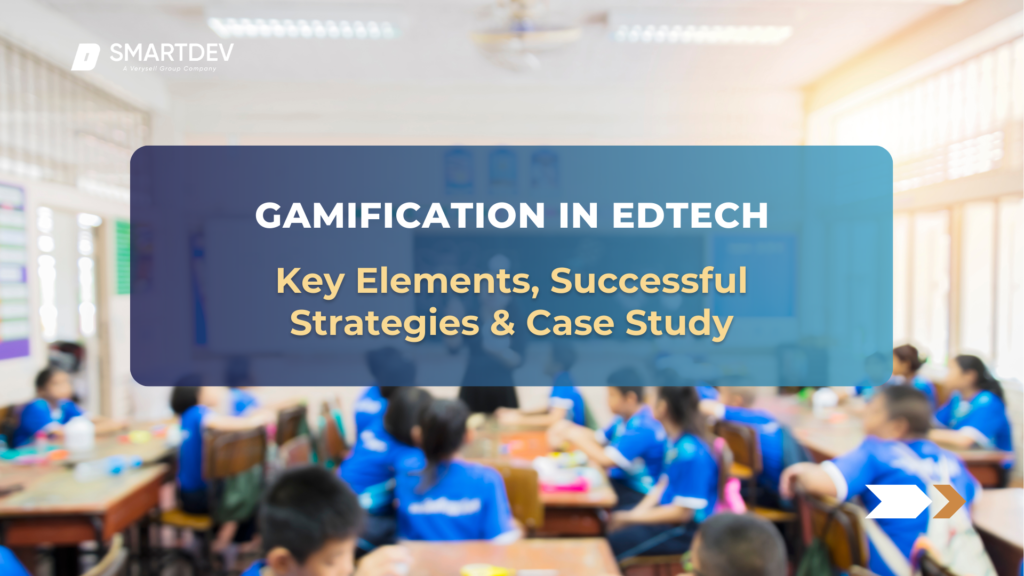
Case Study 4 — Testbook: Mock Tests, Badges & Leaderboards
Background: Competitive exam aspirants के लिए mock tests ही सबसे बड़ी resource हैं। Testbook ने mock testing ecosystem में gamification layer add की।
What they implemented:
- Contest mode mock tests with live leaderboards — simulate exam pressure और competition।
- Badges for percentile brackets — 90+ percentile पर special badge मिलता है।
- Topic-wise streaks and practice badges — concept mastery को reward किया जाता है।
Impact: Users motivated होते हैं to improve ranking; analytics के जरिए weak topics identify होते हैं। High engagement during peak exam season देखा गया।
Case Study 5 — Unacademy: Tournaments & Social Gamification
Background: Unacademy का model courses + test series + community है। Gamification ने उनकी community engagement को amplify किया।
What they implemented:
- Weekly tournaments and live quizzes hosted by educators — winners get vouchers, visibility और mentorship sessions।
- Badges for course completion and peer-reviews — social proof और credibility build होती है।
- Leaderboard shoutouts — top performers को educator sessions में highlight किया जाता है।
Impact: Social incentives ने learners को community में active रखा, और completion rates में सुधार आया।
How These Startups Measure Success — Metrics that Matter
Gamification का ROI केवल downloads से नहीं मापा जाता। EdTech companies नीचे के KPIs track करते हैं:
- DAU / MAU (Daily / Monthly Active Users) — engagement level का indicator।
- Retention Rates (7-day, 30-day) — क्या users वापस आते हैं?
- Completion Rates — courses या modules कितने complete होते हैं?
- Average Session Duration — users कितने मिनट पढ़ते हैं per visit?
- Performance Gains — pre-test और post-test score improvements।
Real success तब होता है जब gamified elements real learning gains में translate हों — यानी better test scores, concept mastery और application skills।
Design Principles for Effective Gamification
अगर आप किसी edtech product में gamification implement करना चाहते हैं, तो कुछ core design principles हैं जो follow करने चाहिये:
- Pedagogy First: Game mechanics को content के ऊपर नहीं बल्कि content के साथ integrate करो। Points सिर्फ distraction न हों — वे learning objectives को support करें।
- Microlearning + MicroRewards: छोटे modules और छोटे rewards अधिक effective होते हैं क्योंकि frequent successes habit बनाते हैं।
- Adaptive Difficulty: Dynamic difficulty adjust हो ताकि users frustrated न हों और ना ही bore हों।
- Social Elements: Peer interaction, team challenges, mentorship shoutouts — social motivation बहुत powerful है।
- Meaningful Badges: Badges को resume-worthy बनाओ — practical skills का प्रमाण जैसे “Analytical Reasoning Master” ज्यादा motivating होता है।
- Transparent Progression: Users को clear roadmap दिखाओ — next milestone क्या है और कैसे पहुँचेंगे।
Pitfalls & Ethical Considerations
Gamification in Learning Gamification powerful है पर misuse या खराब design से negative effects भी हो सकते हैं:
- Rewards over learning: अगर points ही लक्ष्य बन जाएं, students shallow learning कर सकते हैं।
- Social anxiety: Public leaderboards कुछ students में stress बढ़ा सकते हैं।
- Addiction-like behavior: Excessive gamified loops users को over-engaged कर सकते हैं, बिना real learning के।
- Data privacy: Leaderboards और social features में personal data misuse का risk रहता है।
इसीलिए ethical gamification जरूरी है — meaningful rewards, opt-in social sharing और clear data policies होना चाहिए।
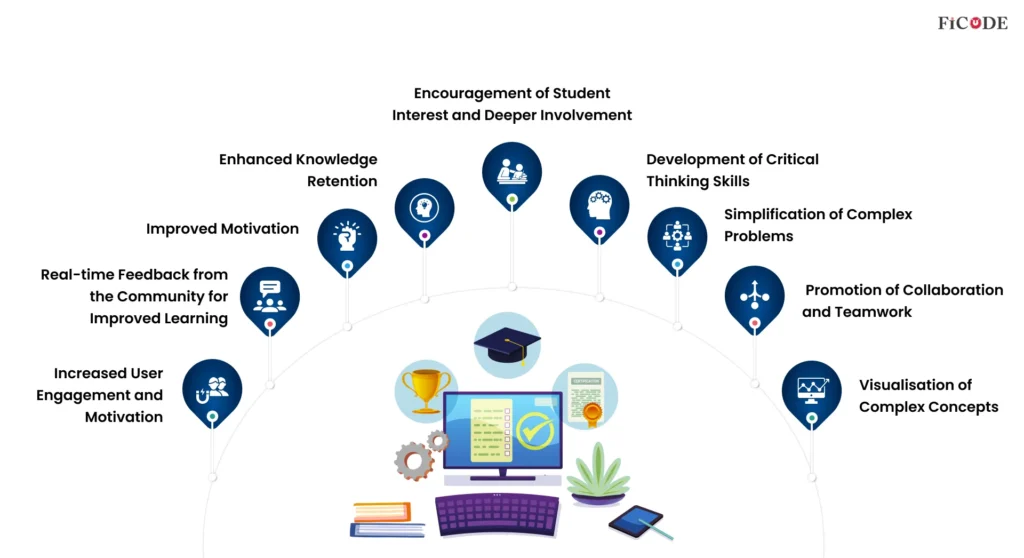
Teacher & Parent Role in Gamified Learning
Gamified apps अकेले सब कुछ नहीं कर पातीं। Teachers और parents का role critical है:
- Teachers: gamified insights को classroom strategy में integrate कर सकते हैं — कौन कमजोर है, कौन progress कर रहा है।
- Parents: micro-achievements को celebrate करें लेकिन overemphasize न करें।
- Both: ensure healthy screen-time और balanced study plan।
Future Trends in Gamification for Indian EdTech
Gamification in Learning आने वाले सालों में कुछ trends देखने को मिलेंगे:
- AR/VR Gamified Labs: Virtual science labs, historical simulations – experiential learning boost।
- AI-driven personalization: Adaptive avatars और NPC-like tutors जो student के pace पर adjust करते हैं।
- Skill micro-credentials: Gamified badges becoming verified micro-credentials employers value।
- Cross-platform ecosystems: Schools, coaching centres और apps का integrated leaderboard network।
FAQs – Gamification in Learning (Indian Context)
Q1: क्या gamification हर student के लिए effective होता है?
नहीं — कुछ students intrinsically motivated होते हैं और उन्हें external rewards कम appeal करते हैं। Best approach है personalization: gamified elements को optional और customizable रखना चाहिए।
Q2: क्या gamification सिर्फ बच्चों के लिए है?
बिलकुल नहीं — competitive exam aspirants, professional learners और corporate training भी gamification से benefit करते हैं। Example: Testbook के leaderboards college students और working professionals दोनों में popular हैं।
Q3: क्या gamification से students सिर्फ points के लिए पढ़ते हैं?
अगर design weak है तो हाँ, पर अच्छे design में points concept mastery को reward करते हैं और deeper learning encourage करते हैं।
Q4: क्या gamified badges job market में useful हो सकते हैं?
धीरे-धीरे हाँ — जब badges को industry-recognized micro-credentials में convert किया जाए तो employers इन्हें value करने लगेंगे।
Q5: teachers को gamification implement करने में क्या challenge आता है?
data interpretation और balancing fun vs learning — teachers को professional development चाहिए ताकि वो app insights को classroom action में बदल सकें।
Conclusion — Gamification in Learning
Gamification ने Indian EdTech landscape में जो बदलाव laaye हैं, वो साफ़ दिख रहे हैं — better engagement, higher retention और frequent practice। लेकिन final goal हमेशा learning होना चाहिए — not just entertainment. Successful gamification वही है जो pedagogy-first हो, data-driven हो और ethically designed हो।
जो Indian startups case studies में हमने देखे — BYJU’S Exam Prep, Vedantu, Toppr, Testbook, Unacademy — उन्होंने gamification को सिर्फ flashy features की तरह नहीं लिया बल्कि structured learning objectives के साथ integrate किया। इसका result measurable improvements, higher completion rates और stronger learning habits के रूप में आया है।
अगर आप educator हो, product designer हो या parent/student हो — gamification को एक powerful tool मानिये, पर use smartly: meaningful rewards, personalization, और balance के साथ। तभी gamified learning सच में “fun + effective” बनकर exam scores और real-world skills दोनों improve करेगा।
Read More :- Online Mock Tests vs Offline Coaching Centres: Which Gives Better Edge for SSC / UPSC / Banking Exams
Read More :- Adaptive Learning Paths for Sarkari Exam Prep: AI Curated Study Plans Based on Weaknesses

